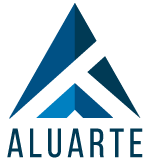- Ingeniería y Servicios Aluarte
- 938 384 2000
- contacto@aluarte.com.mx
Successful Deal Achievement
Best Antivirus Meant for Gamers
julio 20, 2023logo vector Codere » Free download :: Descarga gratuita » vectorlogo es
julio 26, 2023Successful Deal Achievement
Successful deal execution isn’t just about putting a transaction set up but likewise about ensuring the company can deliver on the promised comes back after the deal closes. The most frequent reason deals fail is certainly poor planning and performance throughout the M&A lifecycle, including the two deal sector, transaction zone and post-close zone, as per to analyze from Protiviti.
One of the major steps in this process is a in depth and strenuous M&A research, which includes a thorough valuation and assessment of synergies and financial rewards under a variety of scenarios. This can help ensure that the acquiring organization is aware of potential hazards and can concerned them effectively with the concentrate on company’s management staff.
The next step is a carefully designed and executed integration prepare. As discussed in a latest McKinsey webcast, this is click here for more the biggest exposure to possible companies to destroy benefit and should include a plan for responding to issues such as earn-outs and net working capital. A robust integration plan can certainly help reduce the period it takes to realize synergies and improve income growth, hence creating a firm base for long term future success.
It’s important for the post-close zone to be tightly seated in the management crew early on, from the beginning of the deal zone, since evidenced by the fact that 98 percent of deals that creates value experience a post-close leader engaged from due diligence forward. Additionally , having a apparent handoff through the stages is critical, as is maintaining momentum through the M&A lifecycle and staying away from the traditional stumbling blocks of package fatigue.

